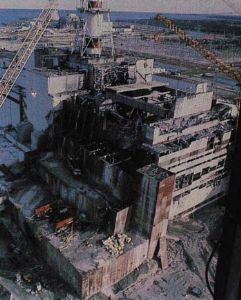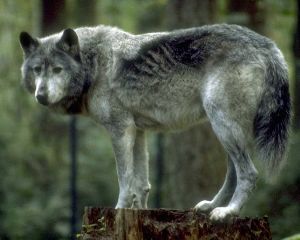by Larry
May, 2006Where Radioactive Life Abounds Slightly over twenty years ago, on the early morning of 4/26/86, a horrific event occurred, but one that created Europe's largest wildlife sanctuary, a "park" roughly half as large as Yellowstone. The Chernobyl explosion and partial meltdown exposed millions to potentially deadly fallout. Already thousands of people have died from either the immediate or long-term effects of the radioactivity unleashed that day.
Slightly over twenty years ago, on the early morning of 4/26/86, a horrific event occurred, but one that created Europe's largest wildlife sanctuary, a "park" roughly half as large as Yellowstone. The Chernobyl explosion and partial meltdown exposed millions to potentially deadly fallout. Already thousands of people have died from either the immediate or long-term effects of the radioactivity unleashed that day.
More are estimated to still be at risk of terminal cancer. A larger number have had or will have life changing cancers from which they recover. In addition, there have been thousands of mutations among the children of women pregnant when the accident happened or whose subsequent pregnancy offspring were affected by residual radiation. This phenomenon is sure to continue, particularly as many people live close to the area officially designated as unsafe, folks whose resources do not permit emigration and fresh starts elsewhere. To this day, radiation in that region is 50,000 times higher than normal. Besides these bleak stats, 300,000 people, in an area twice the size of Rhode Island, were eventually (following delayed candor by the former Soviet Union about the severity of the situation) removed from a region around Chernobyl too affected for further habitation or work there to be permitted.
In short, the Chernobyl disaster is likely to rank first among manmade tragedies for some time to come.
Bizarrely and surprisingly, though, in the absence of one otherwise dominant species, much of life in the vast "exclusion zone" (about 1200 square miles, approximately half each in Belarus and Ukraine) is carrying on. It is certainly not unaffected but is thriving nonetheless. Wild Przewalski's horses were introduced and now are doing quite well, prolifically reproducing, though they are, like virtually all living things there, radioactive. The horses' bones carry large amounts of strontium-90, while quantities of cesium-137 fill their muscles. Many wolves, a rare lynx species, plentiful black storks, ducks in the thousands, mute swans, white egrets, gray herons, and hundreds of additional bird and mammal species are, at least for the time being, doing rather magnificently in spite of the difficulties (extra mutations and cancers, lowered immune responses, or the high concentration of radioactive contamination in eggshells, killing or greatly weakening many young fowl). One hopes our future holds no further such "parks" created through accidental, terrorist, or warfare activity. But if there are, a small consolation could be that, once we are gone, nature may rather quickly make a comeback.
Sources:
Lessons From Chernobyl. A Ray Suarez interview and "NewsHour with Jim Lehrer Transcript" available at PBS - Online NewsHour; April 26, 2006. |
